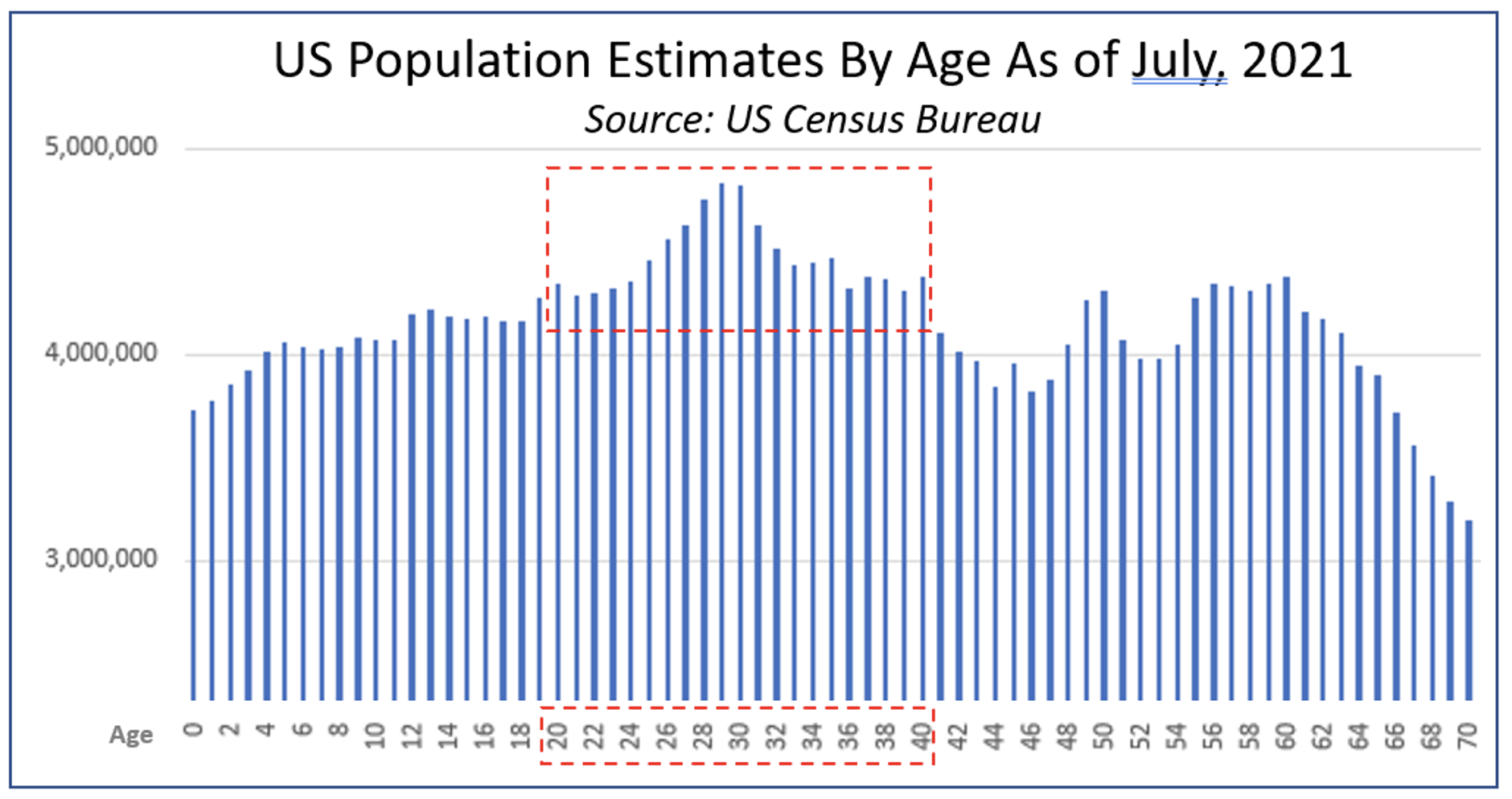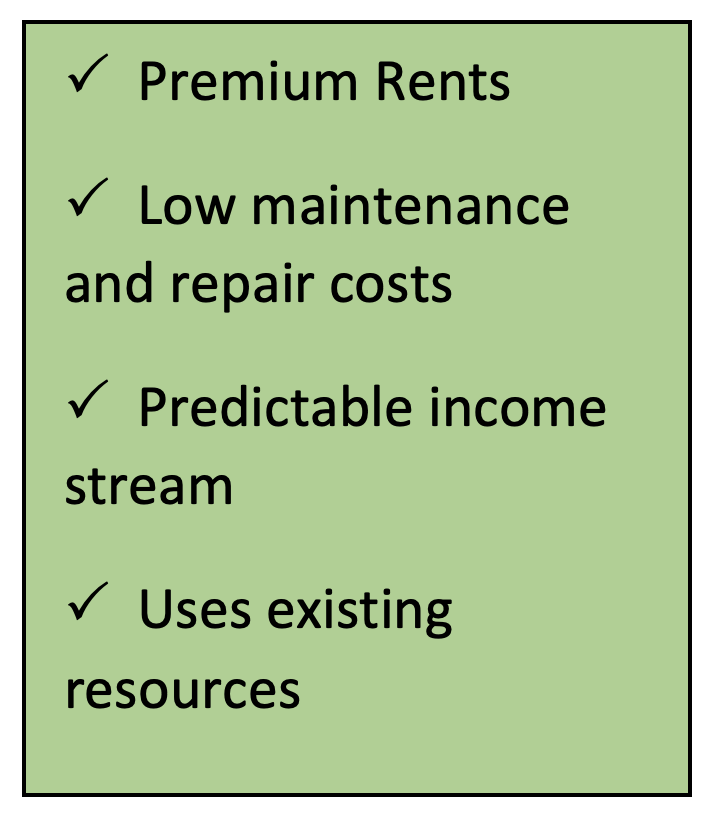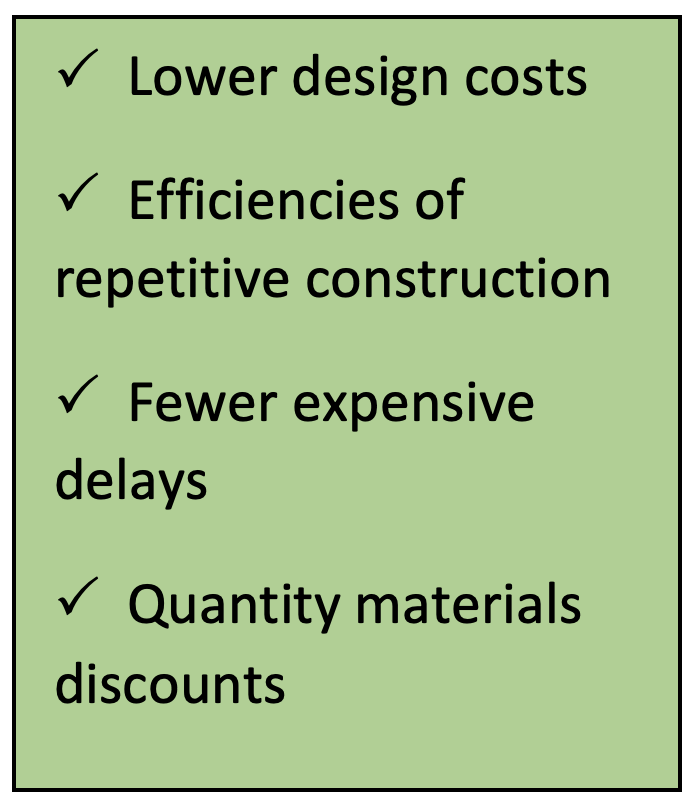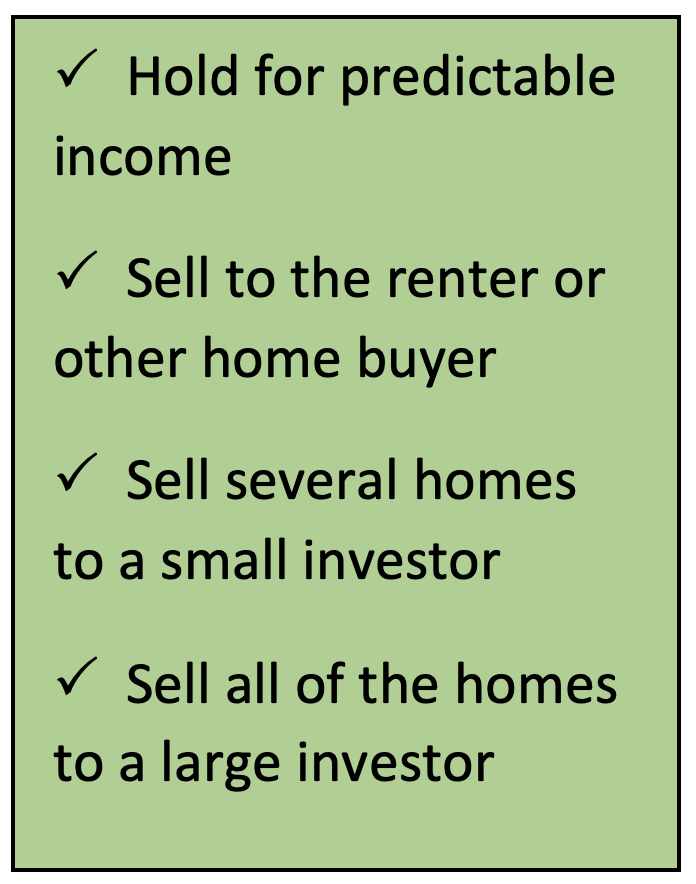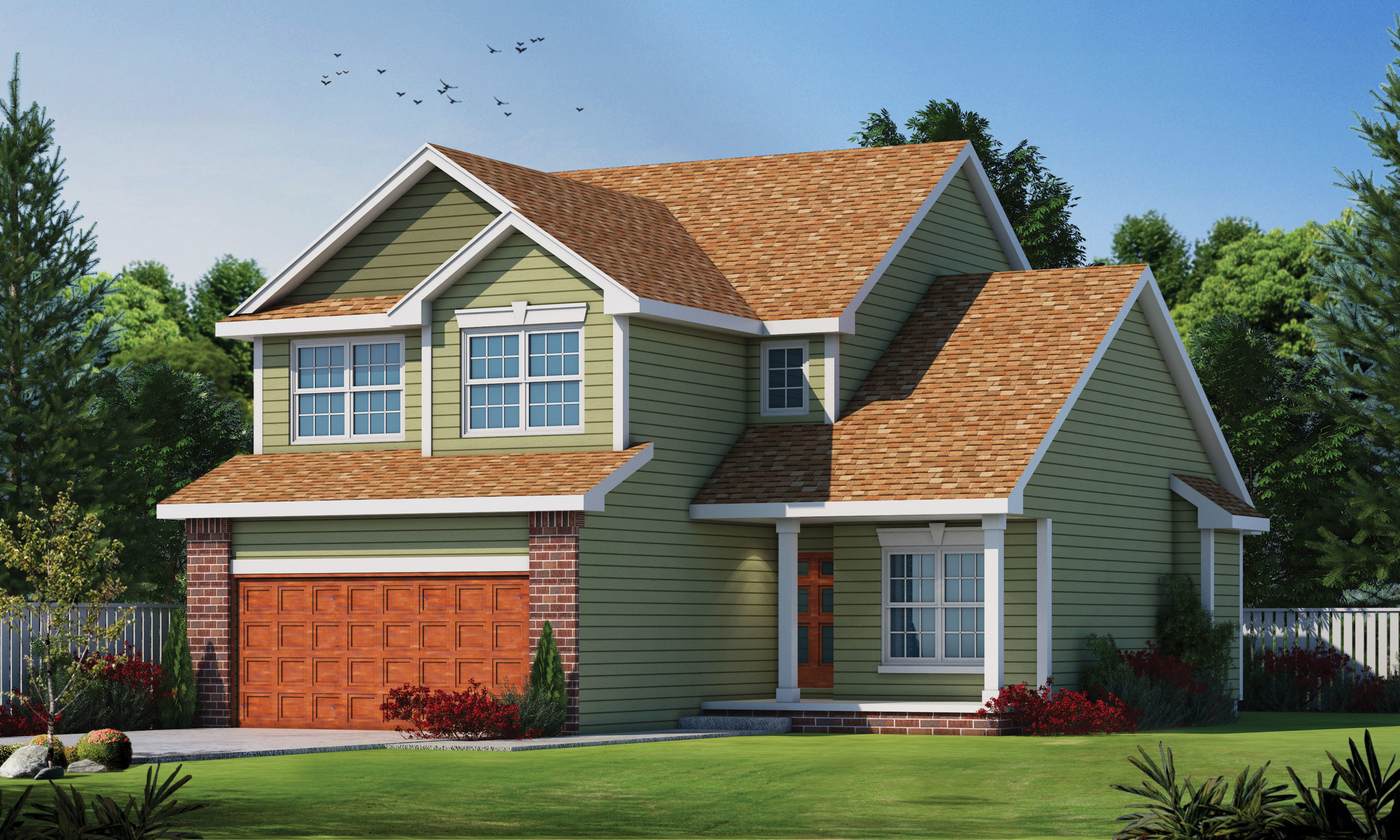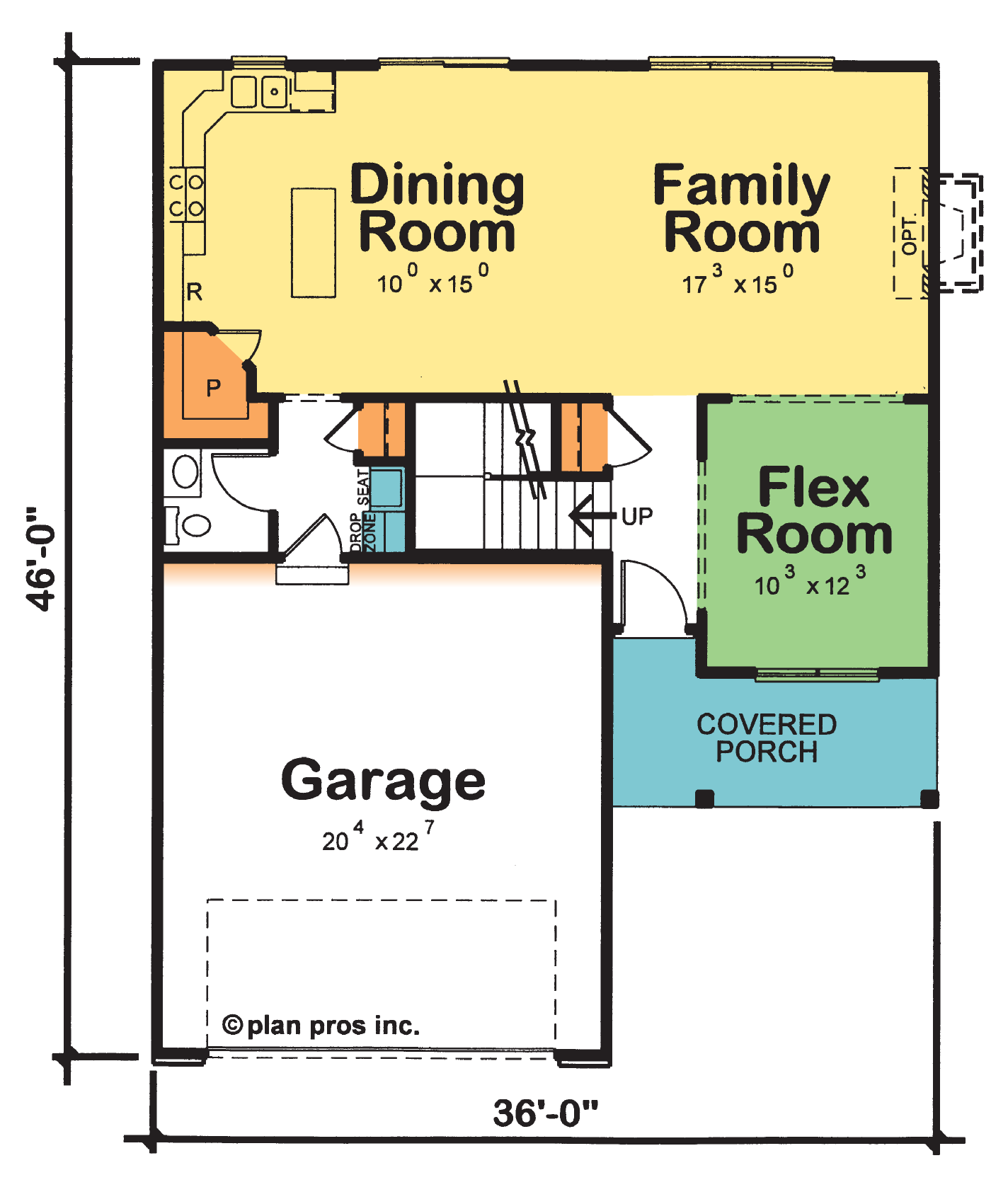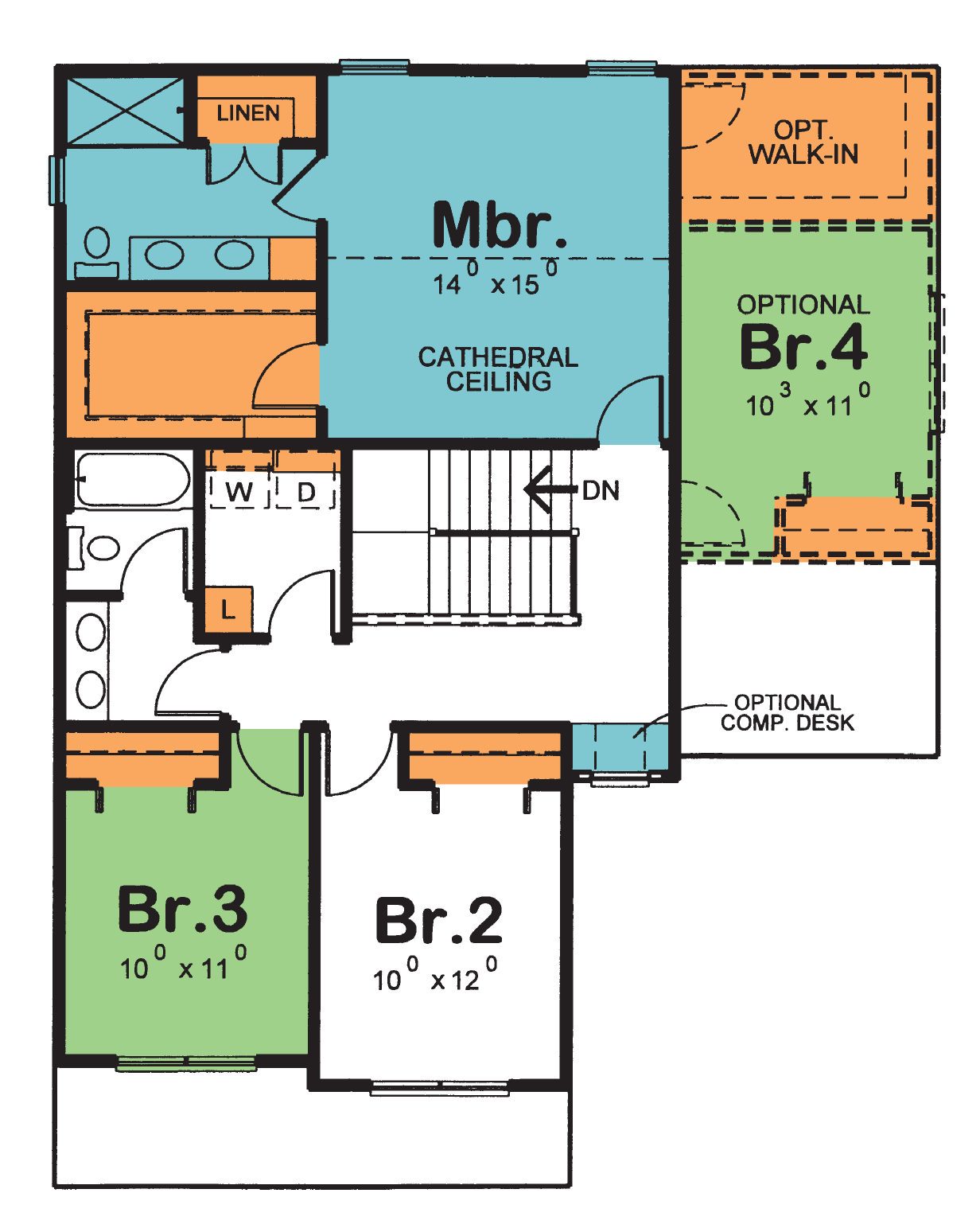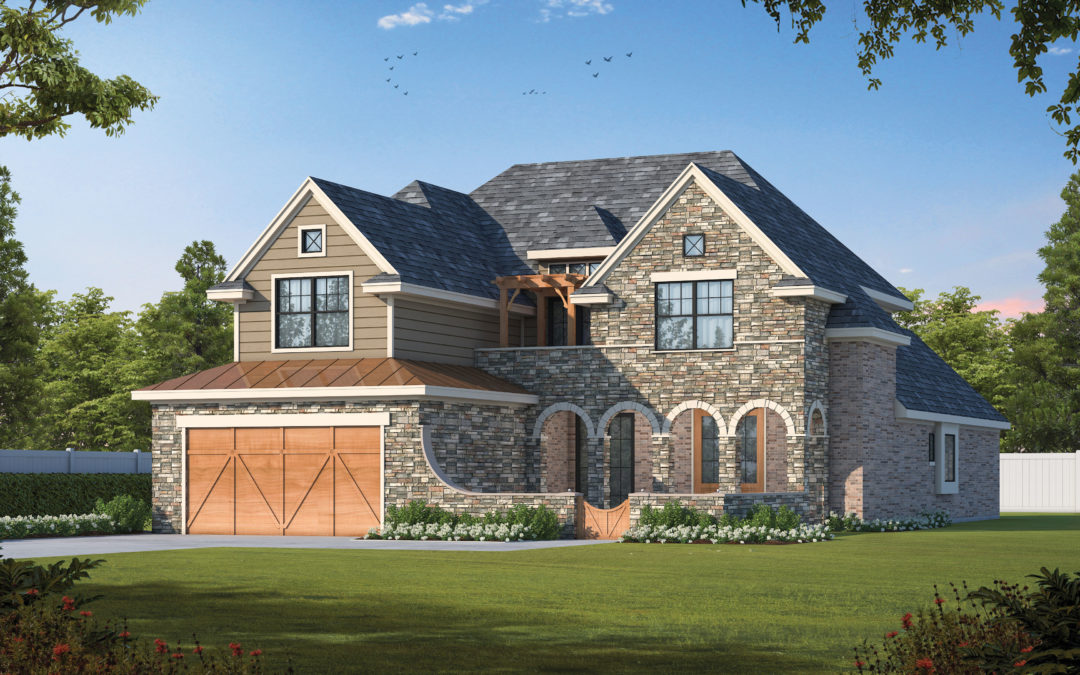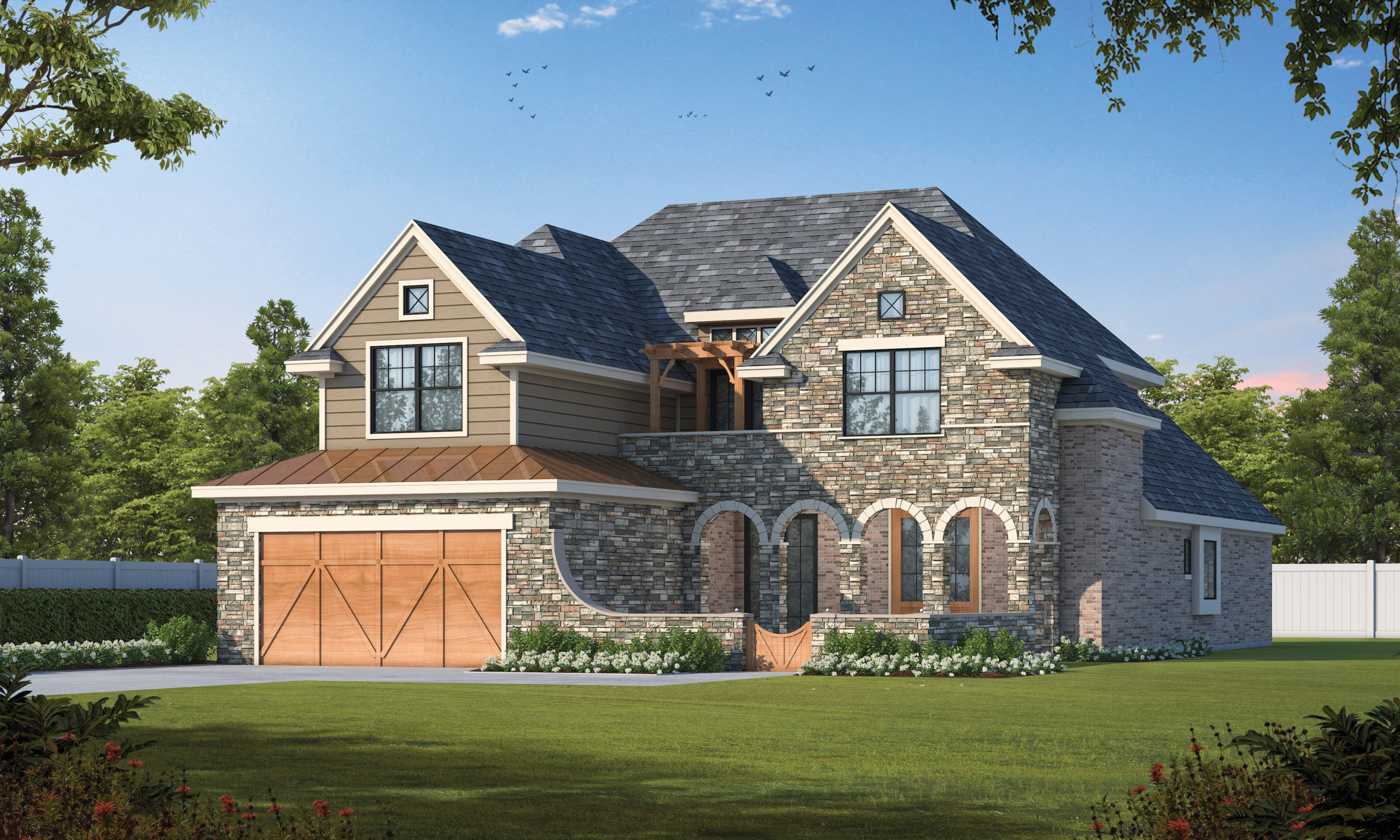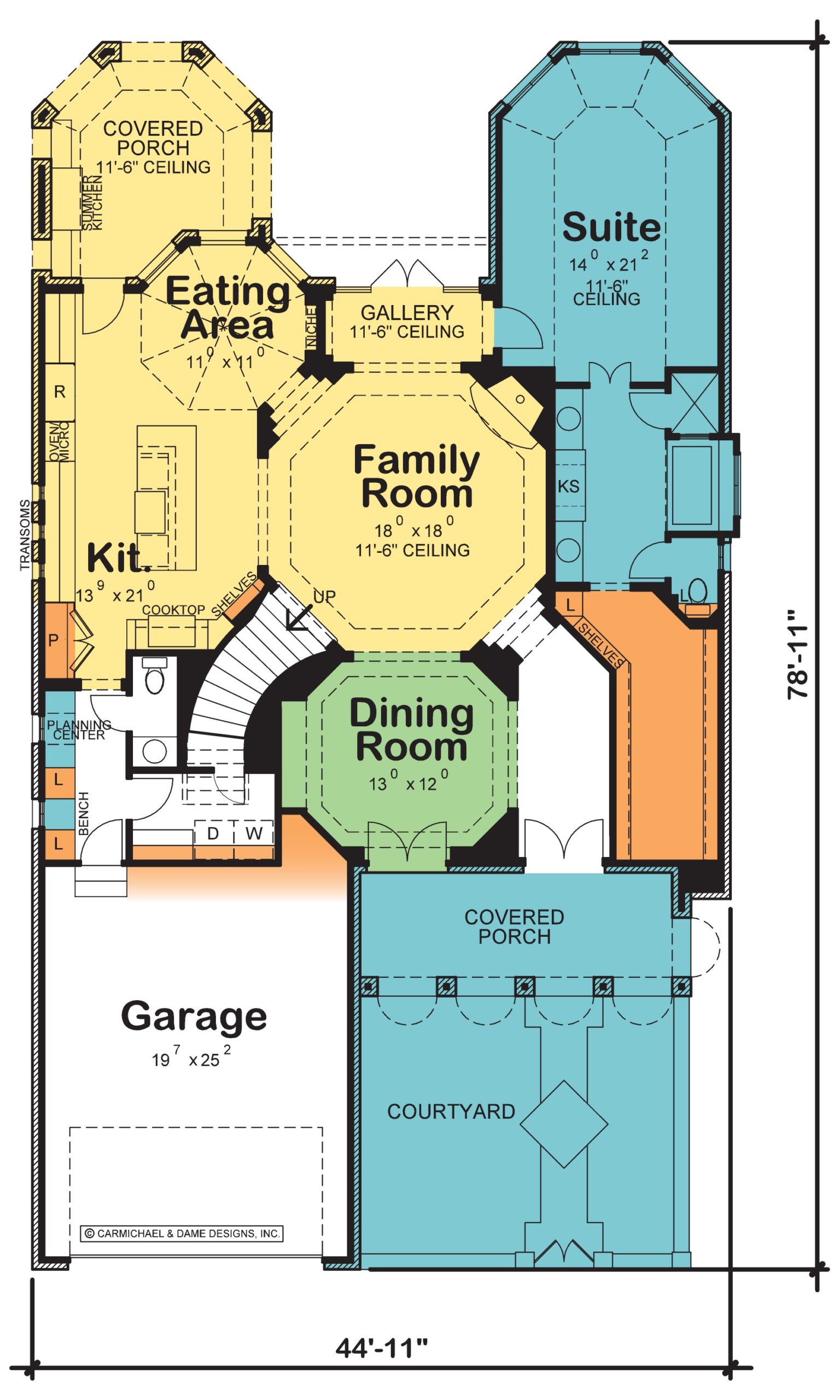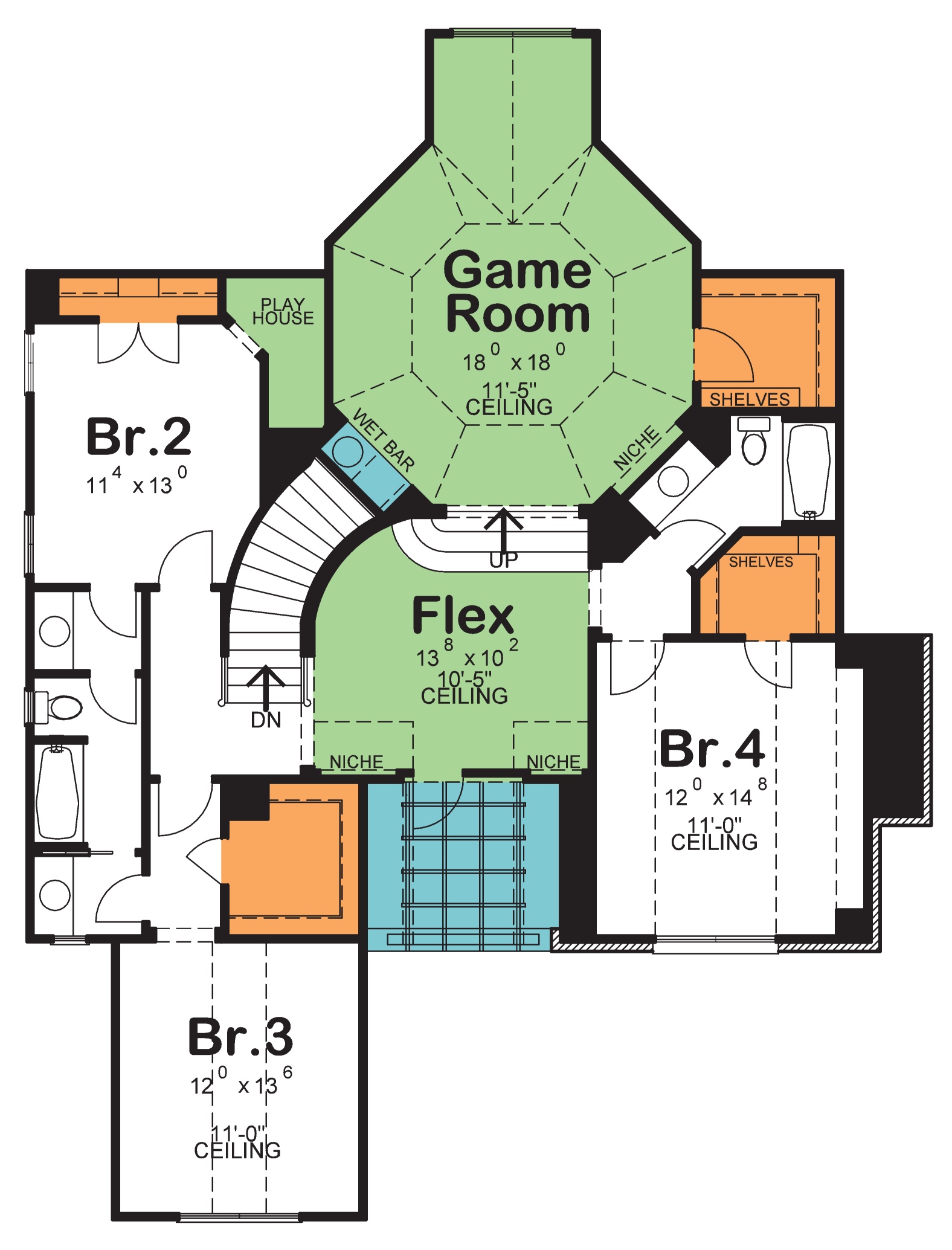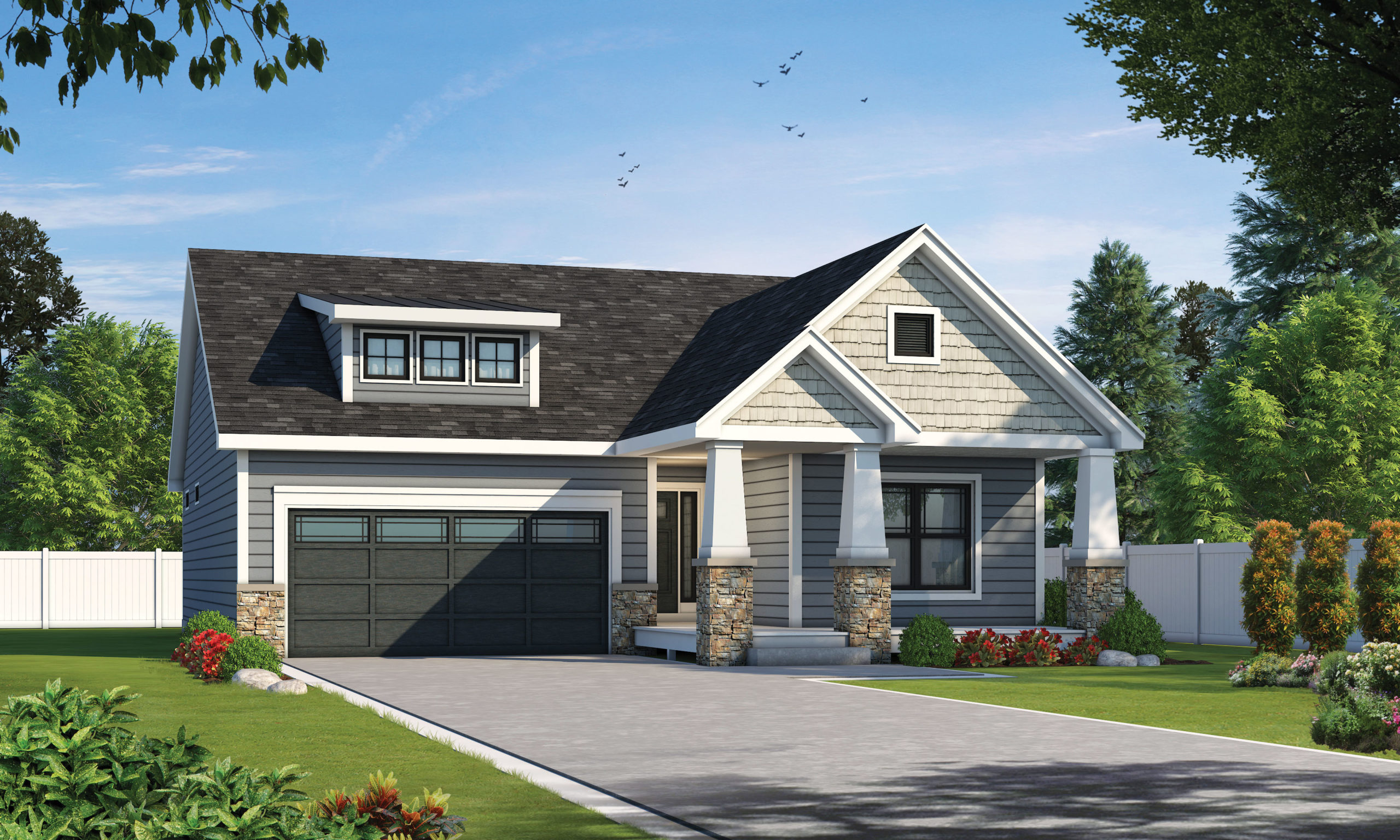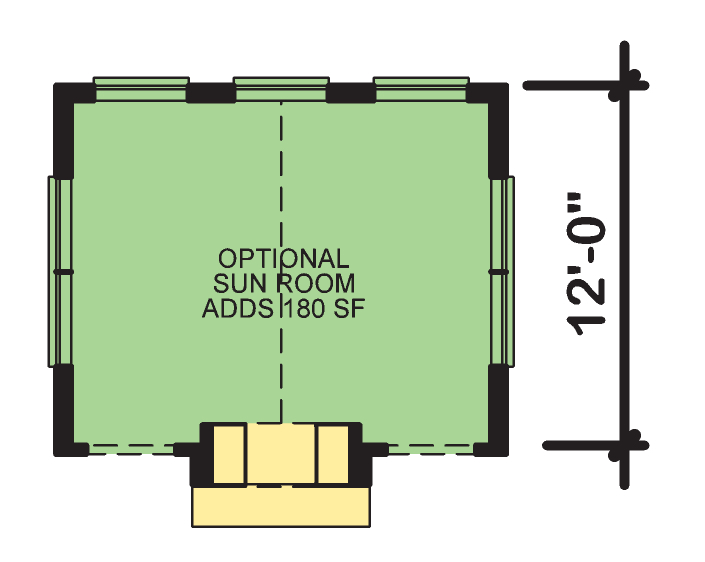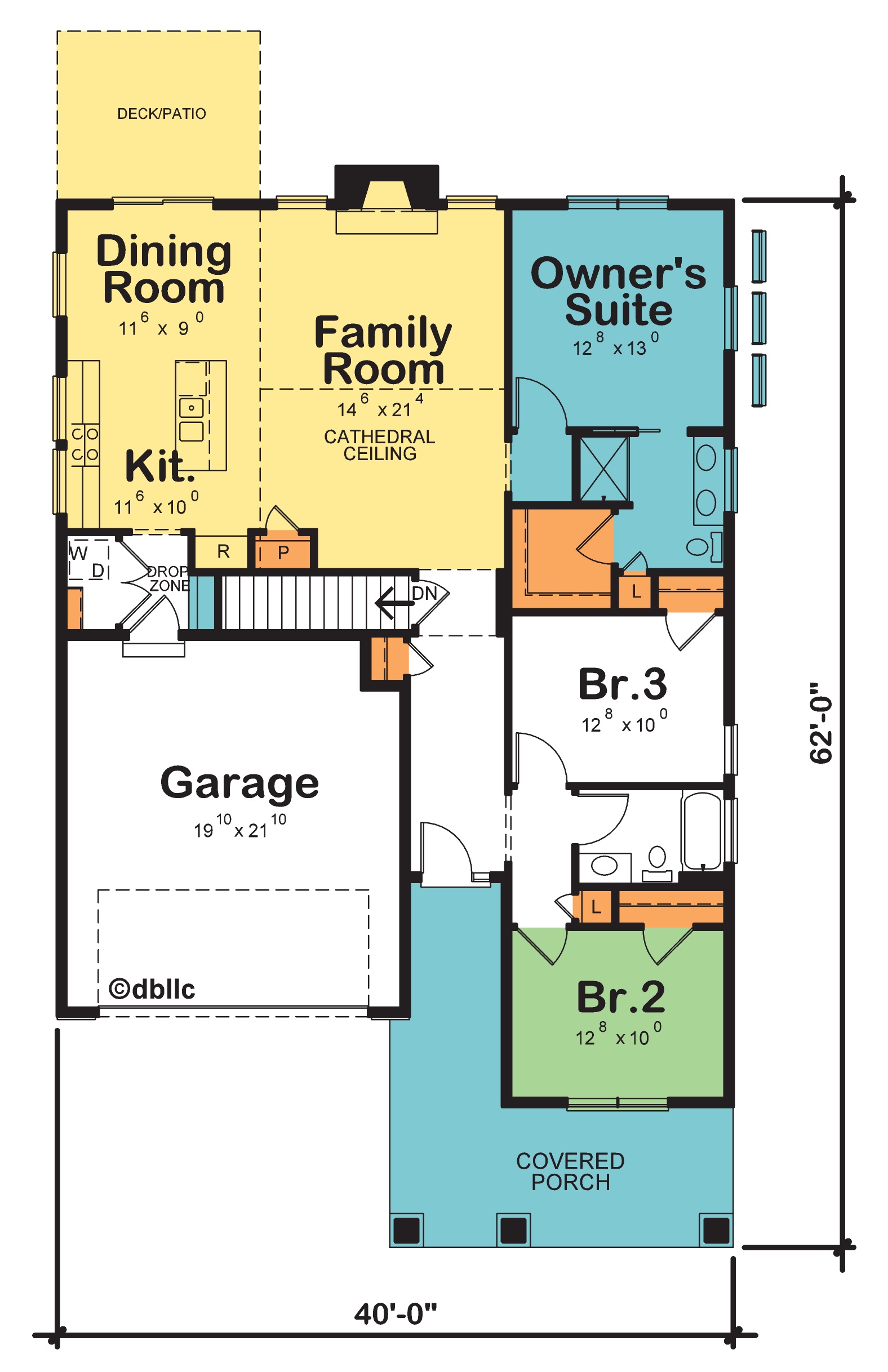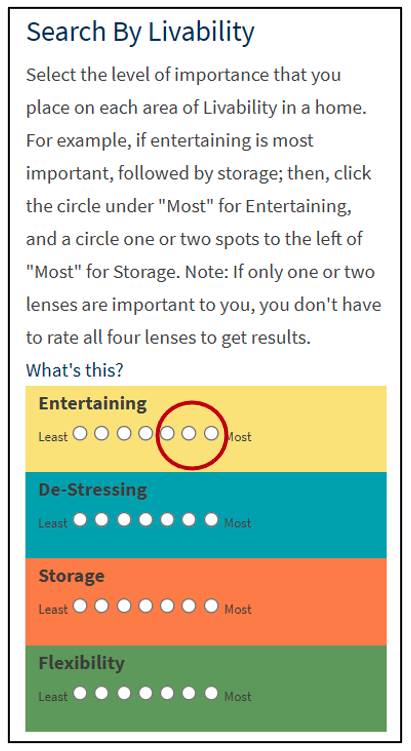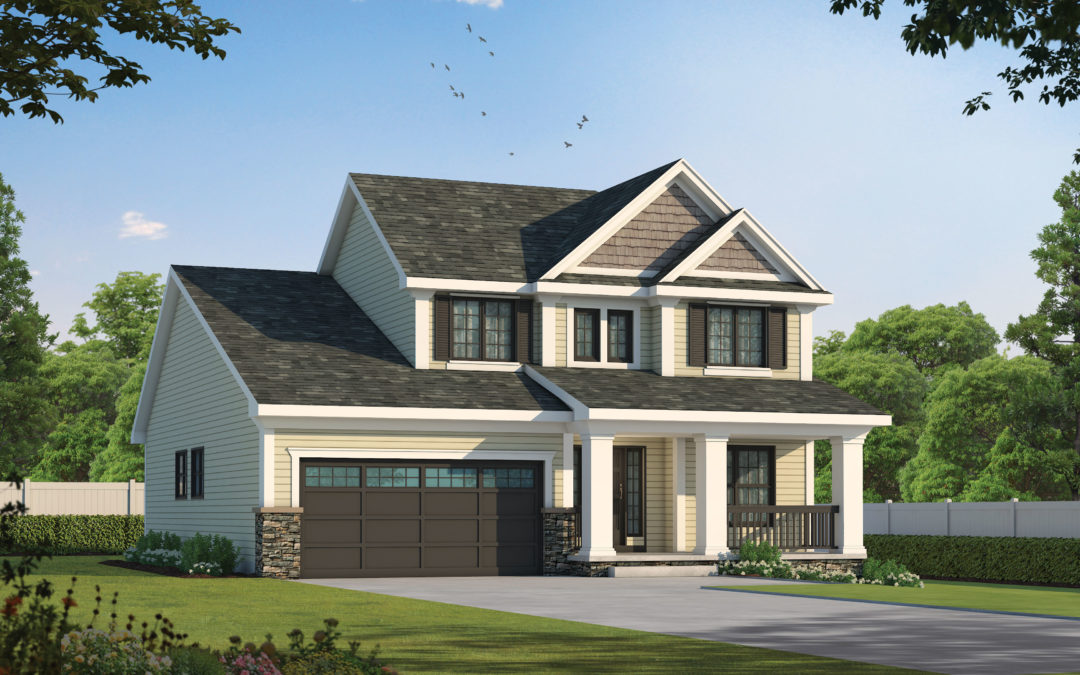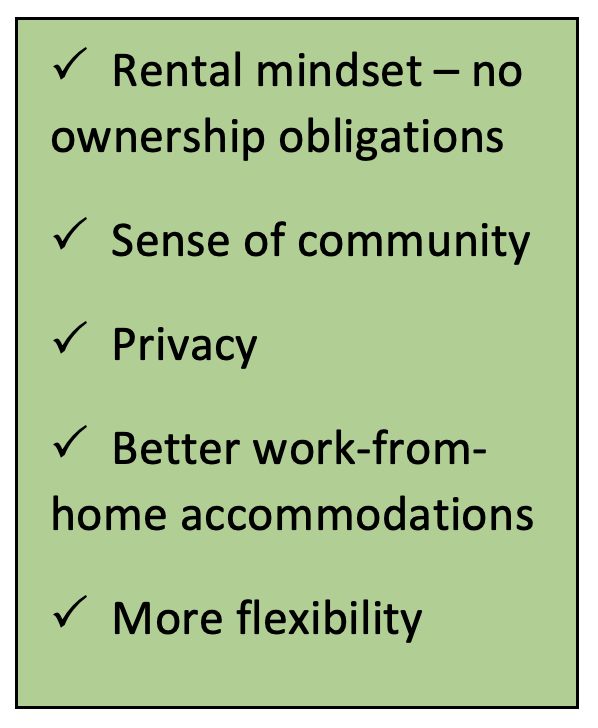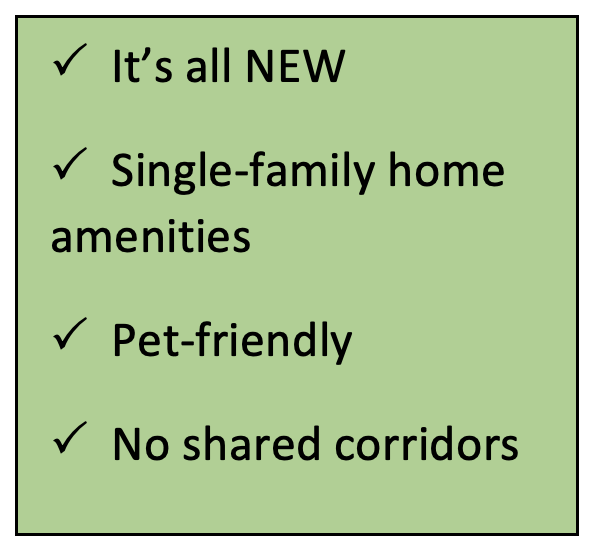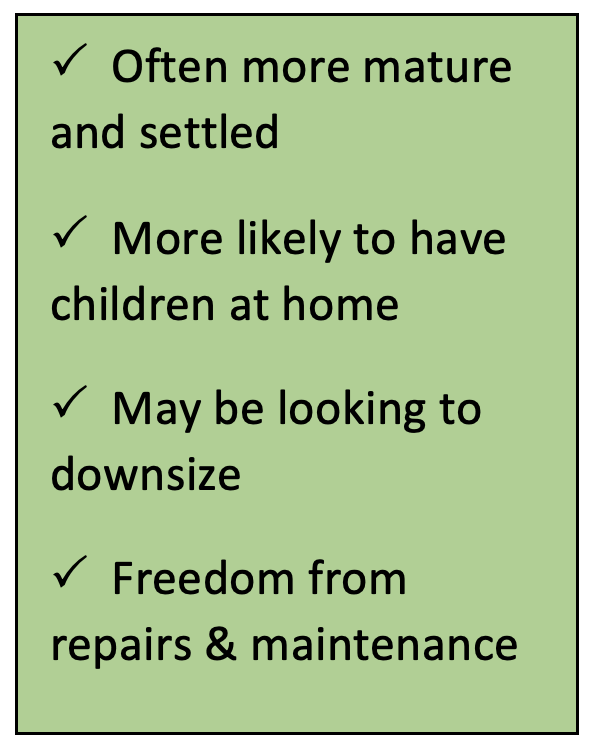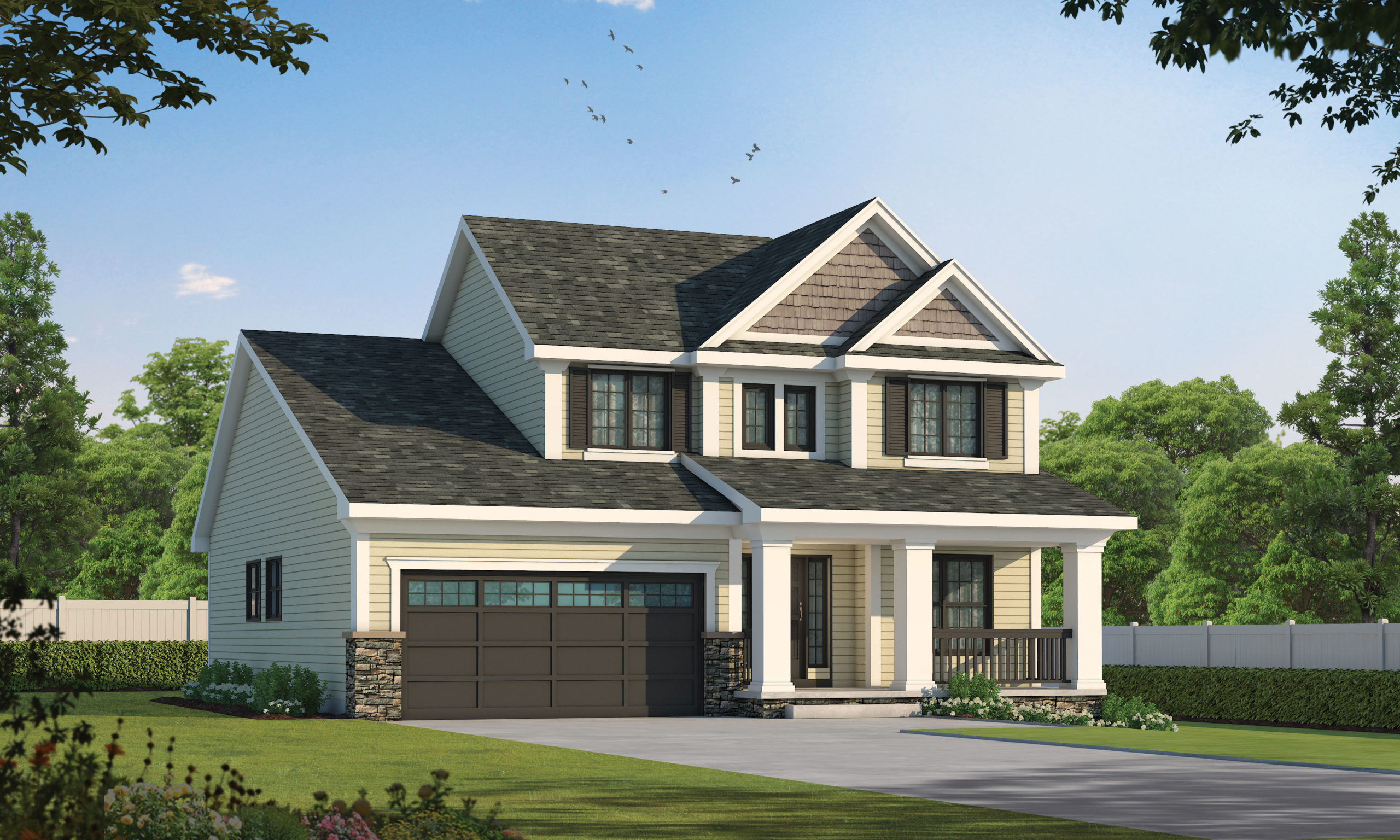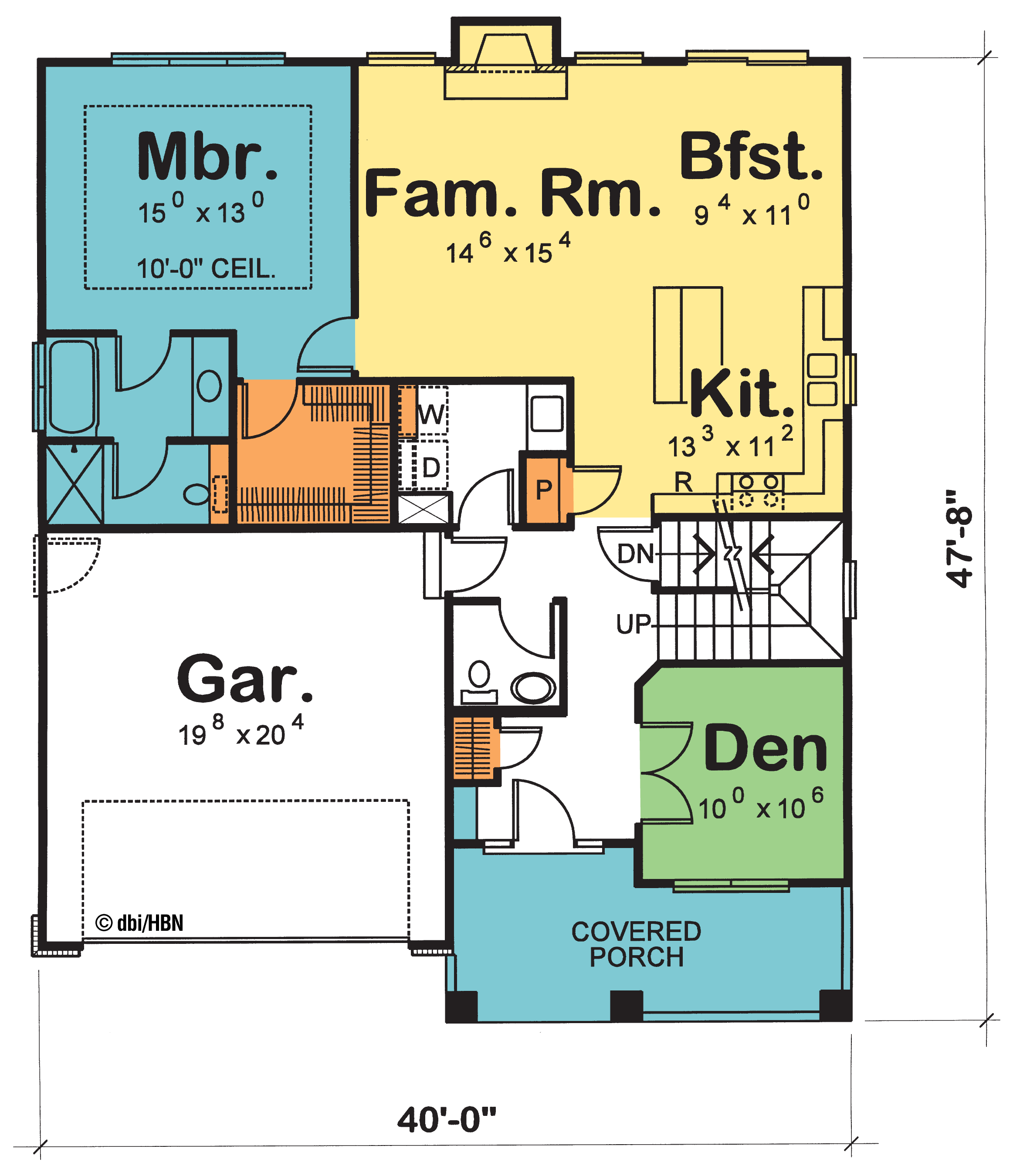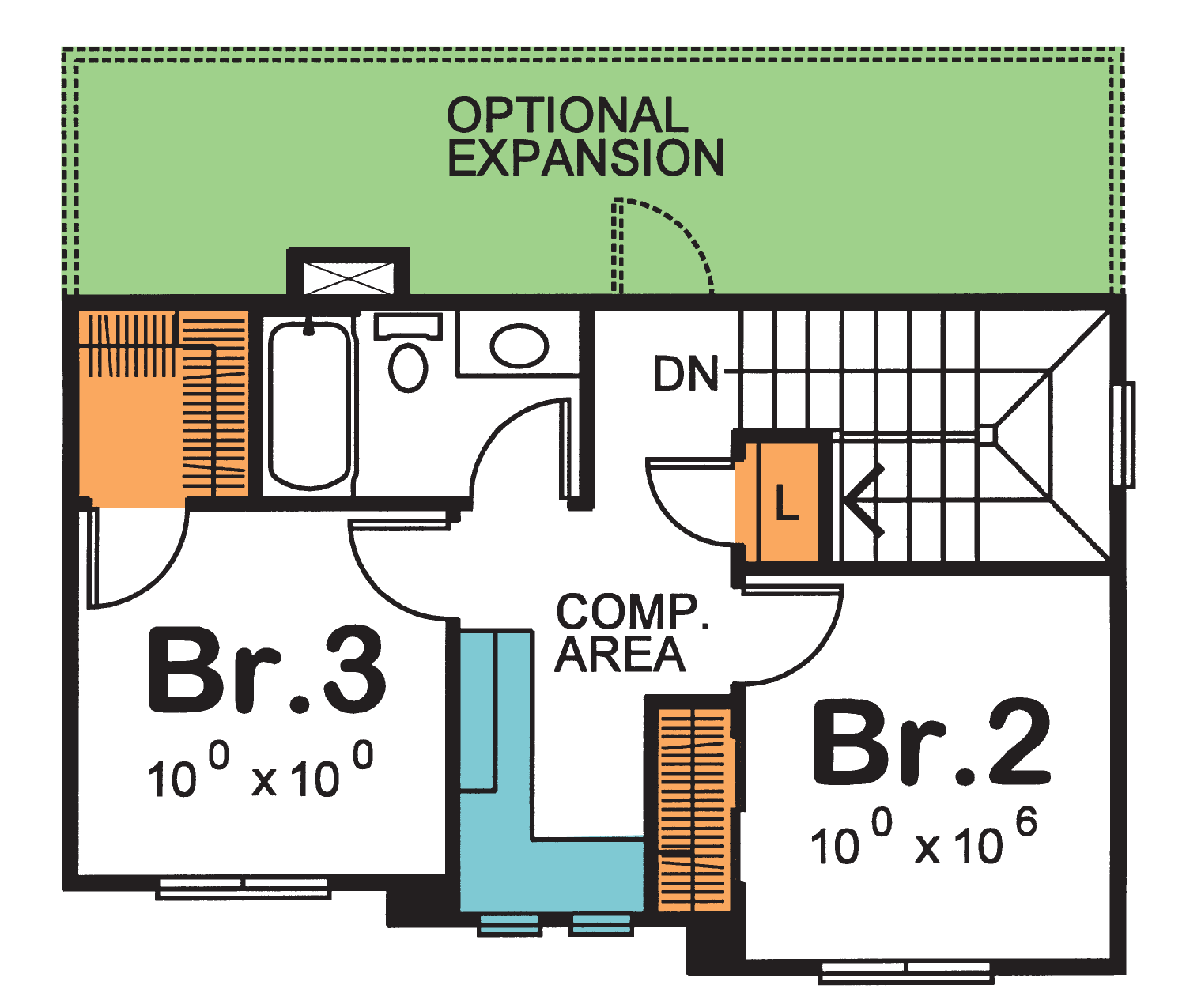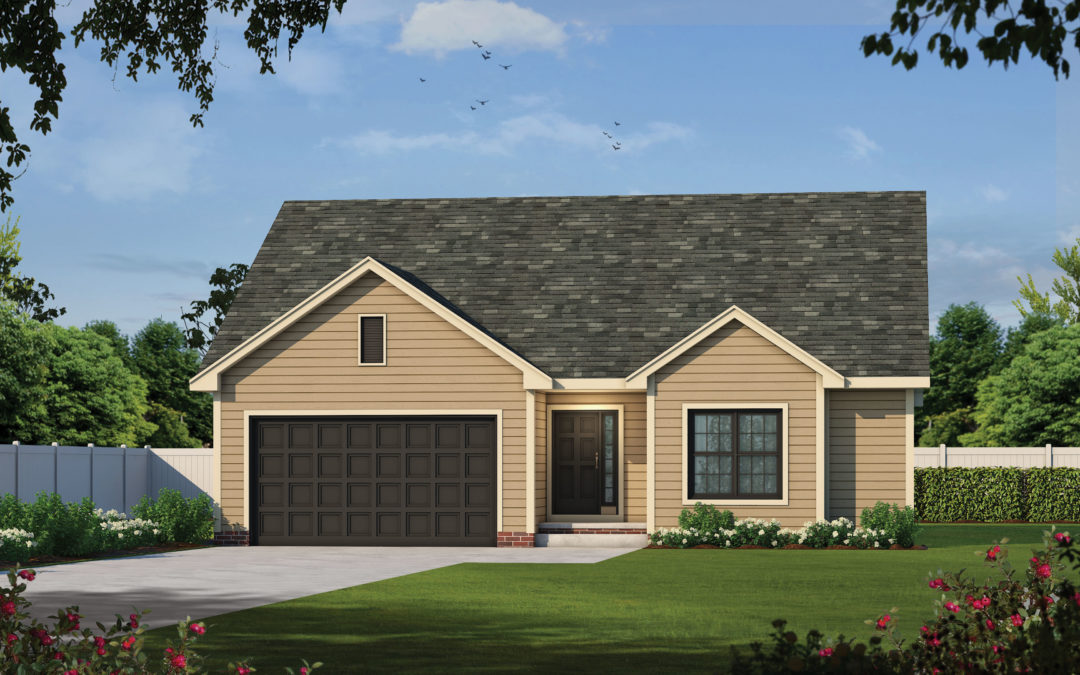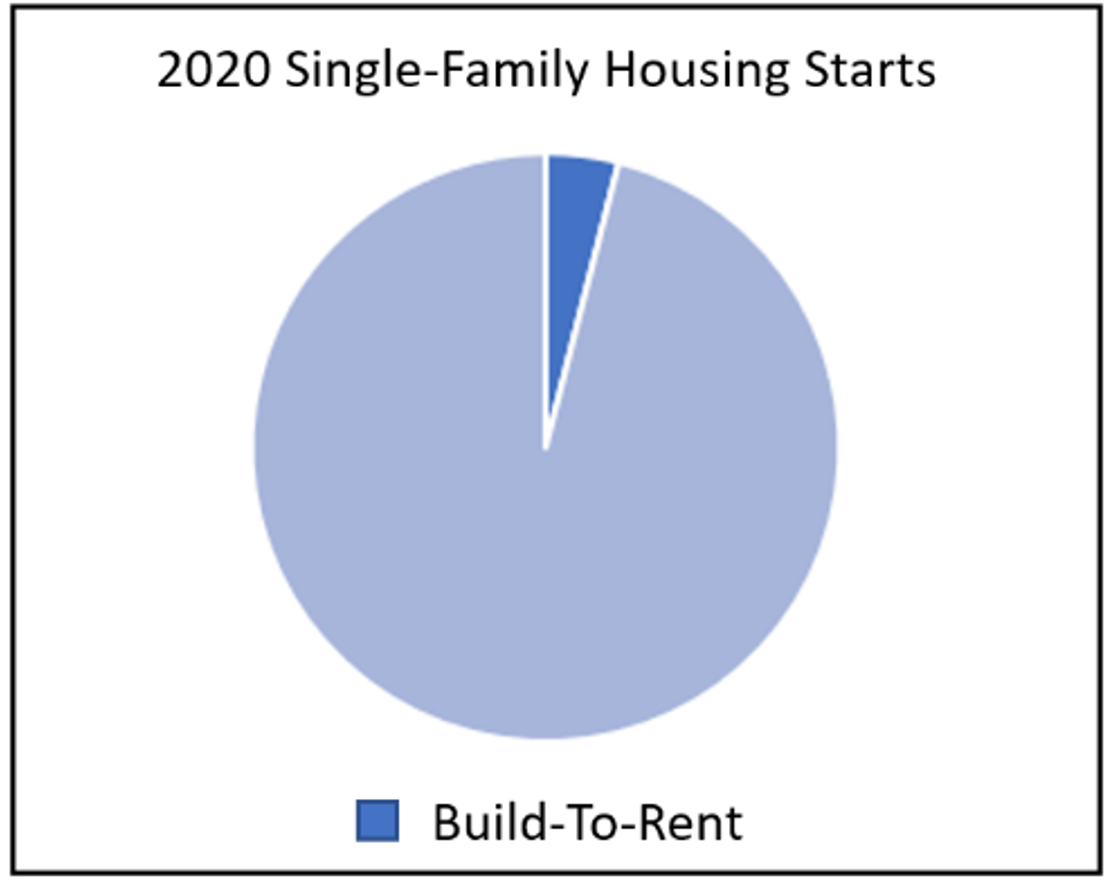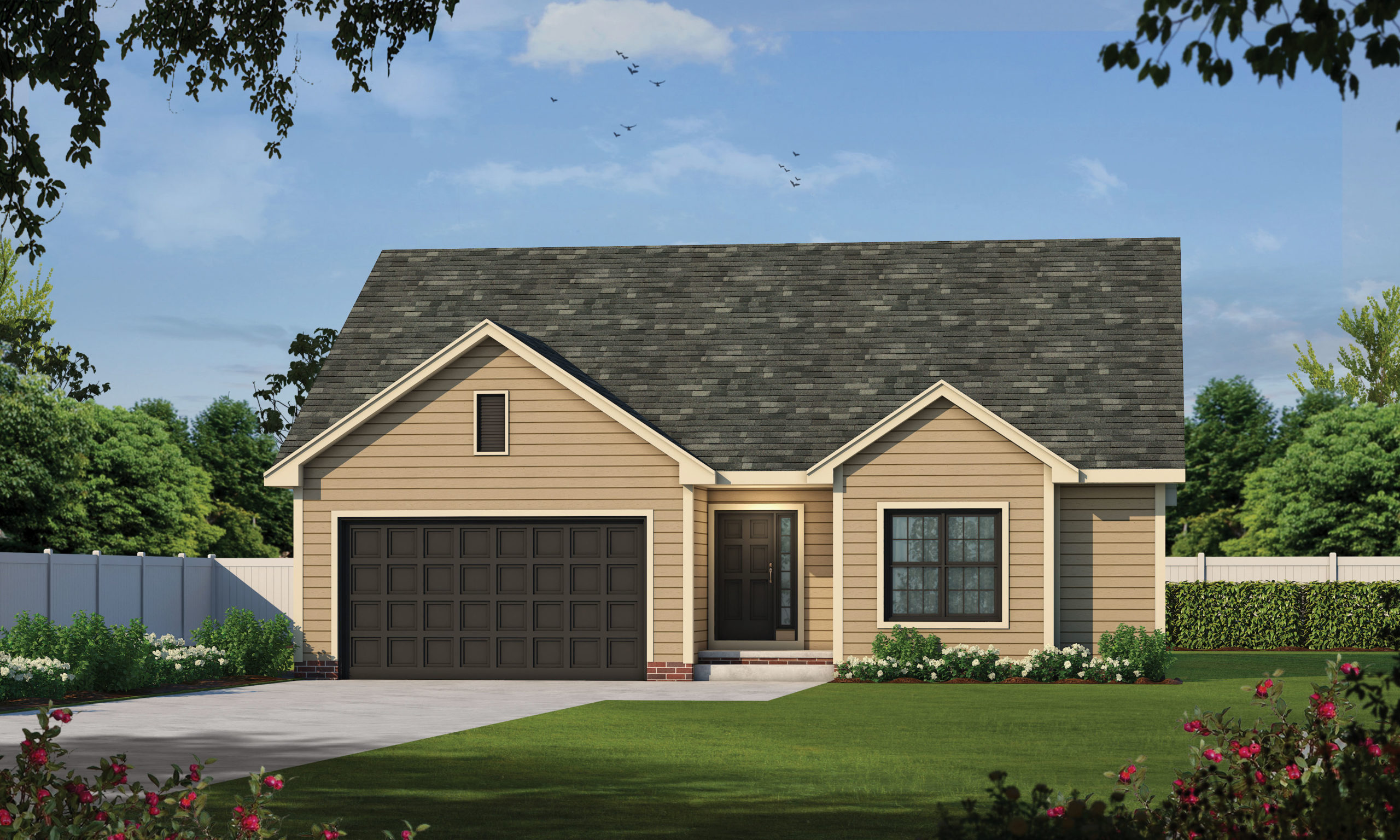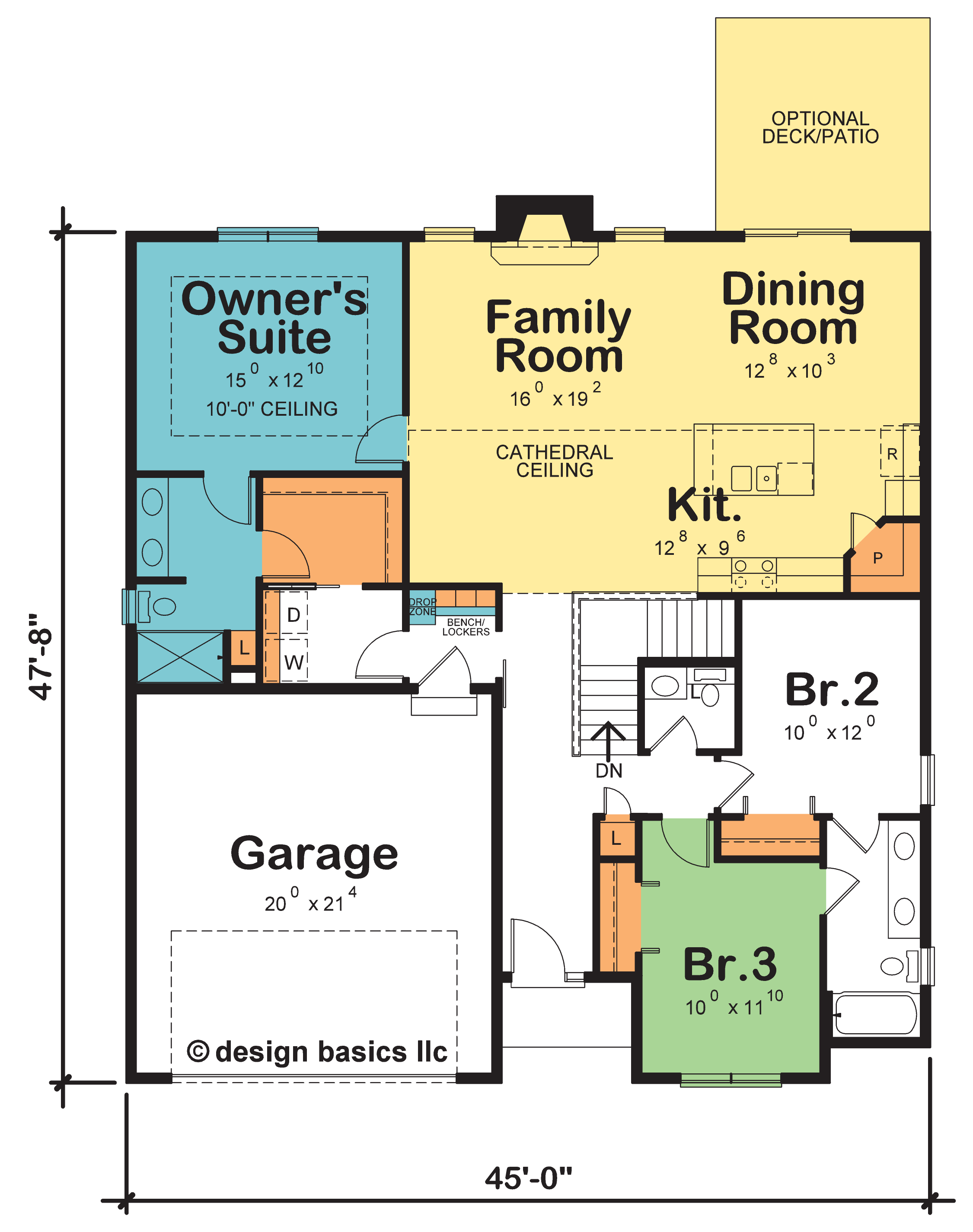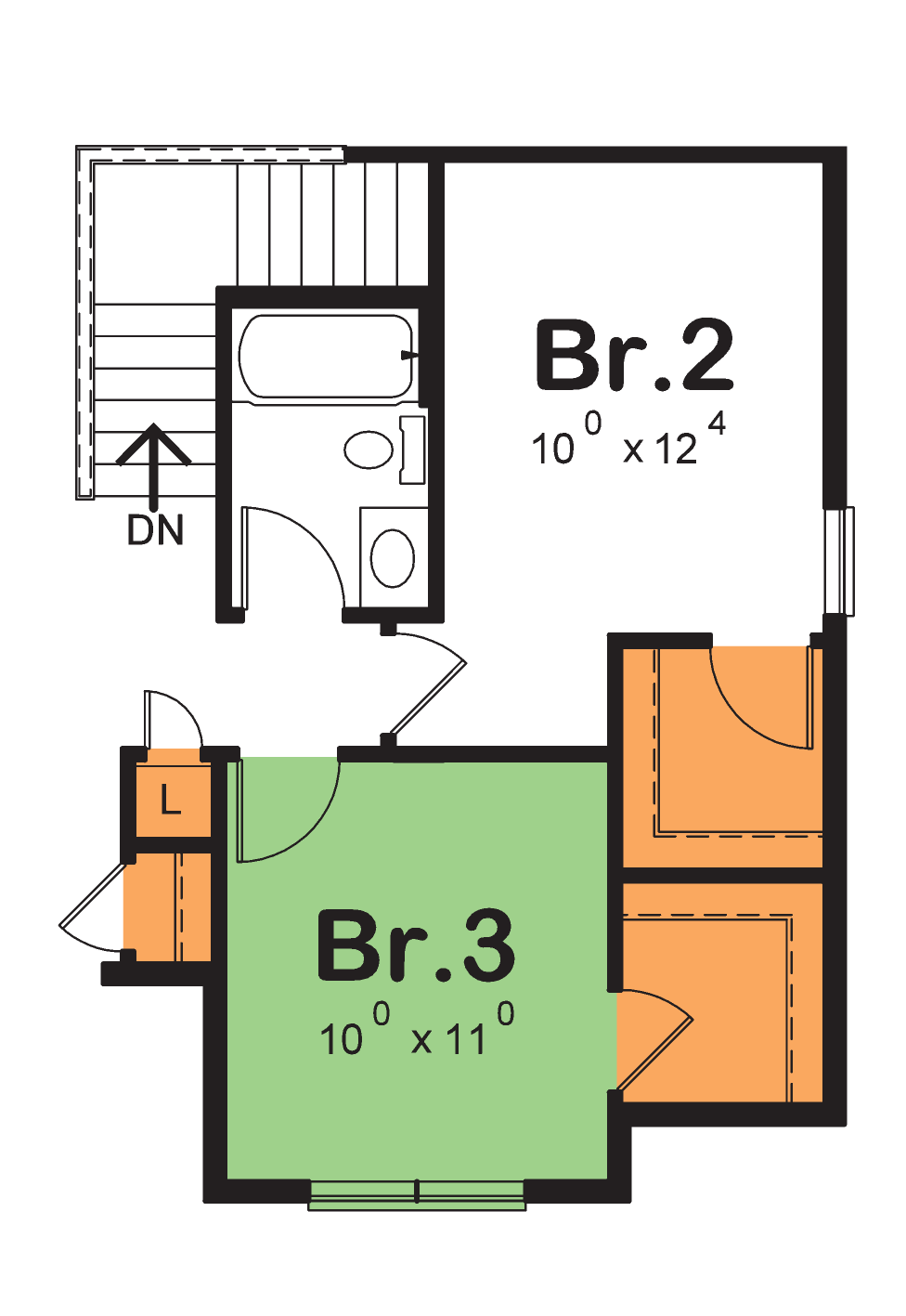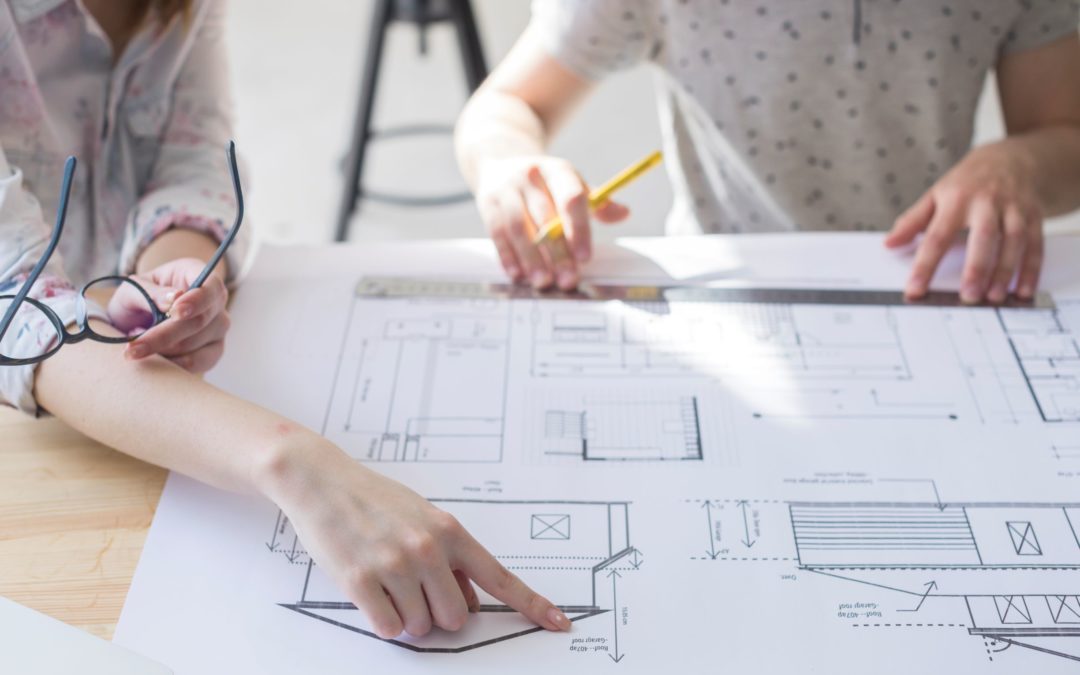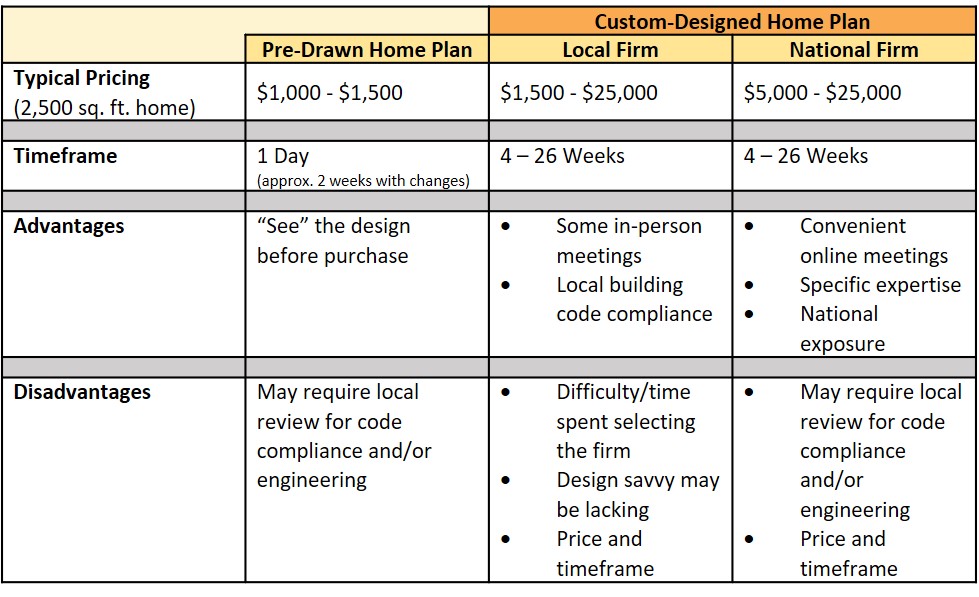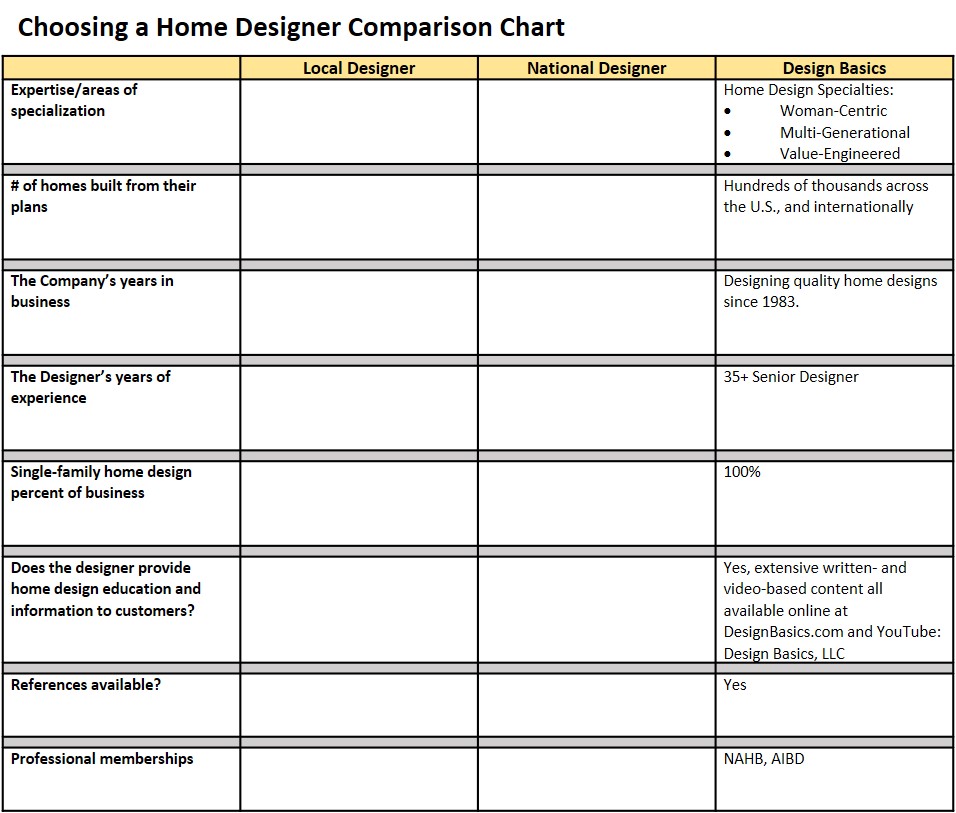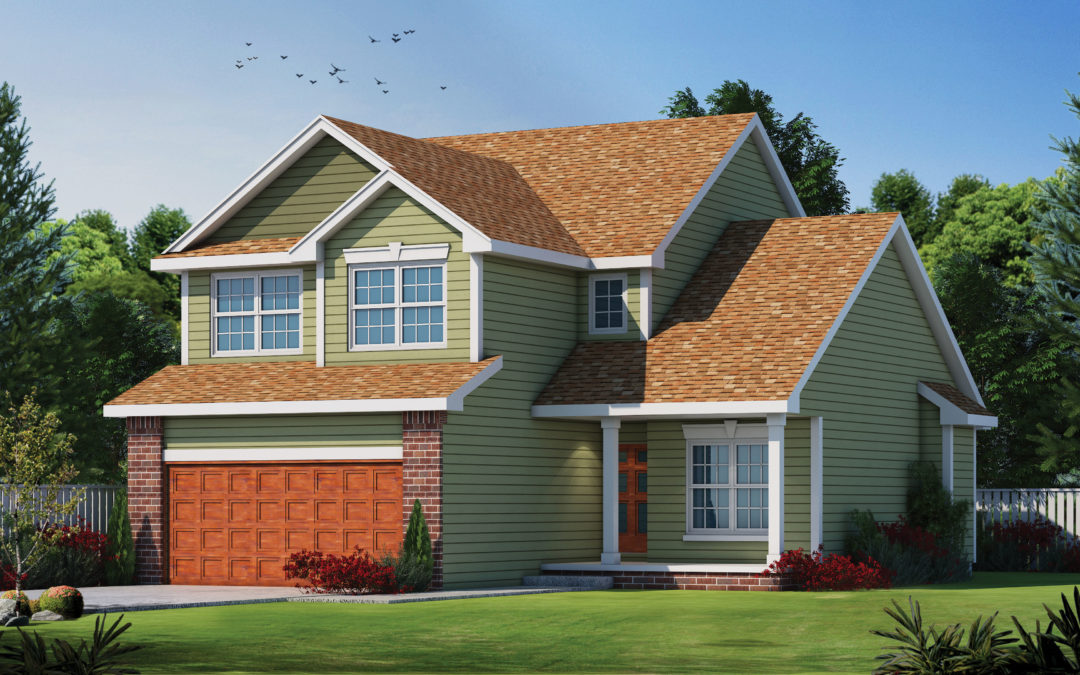
Build to Rent – The Advantages of Build-to-Rent for Home Builders
Built-to-Rent (BTR) single-family homes are attractive to home builders and developers for multiple reasons. With strong, growing consumer preference from quality tenants, BTR homes are a proven type of investment, offering steady, predictable income. It can be a diversification strategy to offset the ups and downs new construction market. Homes Built-to-Rent, as opposed to sell, can offer significant construction savings. And BTR offers numerous options when it comes time to sell.
Consumer Demand
PEW Research reported that 65% of households headed by people younger than 35 were renting, as were 41% of households headed by someone ages 35-44. Looking at the U.S. population, the greatest growth in the next several years will be people currently in their 20s and 30s (highlighted below.)
Over the next several years, as people now 20 – 40 years old age and have children, the single-family housing option will increasingly be in demand.
Exiting the Great Recession, many builders turned to building larger, more expensive homes due to increased costs for everything, leaving even fewer “affordable” new home options. BTR is one way of addressing the demand for new single-family homes at a monthly payment more households qualify for.
The added space found in three- and four-bedroom single-family houses, rare in the multifamily arena, better suits the needs of growing households. At the same time, as their careers and incomes blossom, these renters are becoming more financially stable and reliable tenants. As compared to multifamily, there’s also less turnover in single-family rentals.
A Solid Investment
Like single-family home buyers, renters are willing to pay a premium for new construction, especially homes with today’s in-demand design and amenities. Since brand-new homes will have minimal maintenance and repair issues for several years (outside of what would be typically covered under the new home first-year warranty), such expenses will be low. And those BTR first-year warranty costs will likely be less, as compared to the warranty expectations of home buyers.
A scant decade ago, home builders who survived the housing market downturn were just starting to see would-be buyers again. A BTR portfolio of homes may provide the regular income stream needed to help weather the next new home construction downturn. Such a diversification strategy, moving into an adjacent market space as opposed to something entirely different, allows the BTR home builder to capitalize on existing systems, resources, personnel, and know-how.
Single-family BTR homes can start producing income as each home is completed, as compared to multifamily’s longer construction timeframes before realizing revenues. Another strategy, kicking off a brand-new community by selling and then constructing BTR homes to an investor, can generate the needed capital for further development.
Cost Advantages
Build-to-Rent can offer numerous, significant savings over for-sale homes. Home design costs can be spread among a greater number of homes. Value-engineering can maximize efficiency, while repetitive builds minimize the added costs and potential construction delays for products such as roof trusses. Timely product selections based upon ready availability can eliminate costly setbacks, while buying larger quantities of materials may result in added savings.
Not dealing directly with custom home buyers can shorten building timeframes and allow builders to focus on construction, without interruption. Expensive change orders are mostly eliminated, as is the manpower consumed in pricing the changes. Though at the time this is being written the new home market is red-hot, a return to more typical market conditions brings the financial risks associated with speculative construction.
Future Flexibility
While contracting upfront to Build-to-Rent for investors is one approach, holding a BTR home portfolio produces recurring revenues. Then, when the time is right, the homes can be sold. Perhaps the existing renter would be interested in purchasing that home. Small investors might want to add a modest number of homes in one community to their rental holdings. Larger investors might be interested in acquiring the entire neighborhood. Regardless of their size, most investors favor newer homes requiring less upkeep, than older homes that may need to be renovated.
Build-to-Rent has become a part of the new construction landscape. The growing preference for renting rather than buying and the opportunity to live in a new single-family home are driving demand. Construction efficiencies coupled with reduced headaches streamline production. Recurring revenues with minimal unexpected expenses create an attractive income stream, and an appreciating asset attractive to numerous buyers makes for a wise investment. Still, the math has to work, beginning with the product to be built. And that starts with homes people aspire to live in. We conclude this series looking at:
Anatomy of a Successful BTR Home Design
As described previously, the sweet spot for single-family BTR houses tends to be three- and four-bedroom homes that are 45-feet-wide or narrower, around 2,000 square feet or less. Here we’ll examine one such design, plan 29318 the Herndon.
Attractive and value-engineered, the Herndon can be built with three bedrooms (1,840 square feet) or four bedrooms at 2,055 square feet, meeting two sets of buyers with one plan. The slab foundation is standard, while both crawl space and basement foundations are optional. The home’s 36-foot overall width and 46-foot depth fit well on more modest homesites, while the simple foundation saves money.
Make no mistake, home buyers equate 8-foot main level ceiling heights with older homes. Under a 9-foot ceiling, this design’s openness further contributes to a sense of spaciousness on the main floor. The extra-deep kitchen pantry draws applause, and carrying groceries in is quick and direct. Note that you don’t walk through the laundry carrying in those groceries (another “dated” design element.) Rather, there’s the drop zone seat and coat closet in this rear foyer. The powder bath location provides privacy. And the flex room checks off the box for working from home.
Second-floor accommodations of this design are equally enticing to renters. Secondary bedrooms are served by a compartmented bathroom which can de-stress the morning rush of trying to get everyone out the door on time. Having the laundry room upstairs eliminates long treks up and down the stairs with an overstuffed laundry basket. A cathedral ceiling in the Owner’s Suite is an unexpected WOW factor, as is the large walk-in closet. The appreciation for the importance of storage is also evident in the bathroom’s 5-foot linen closet. Yes, that linen closet could be omitted in favor of a bathtub. Building the fourth bedroom adds the potential of a second walk-in closet for the Suite, or a private Sanctuary Space/Peloton area.
For more resources on thoughtful design:
- Visit our blog
- Browse selected B2R housepPlans
- Thoughtful Design Concepts
Photo: <a href=’https://www.freepik.com/photos/people’>People photo created by yanalya – www.freepik.com</a>
